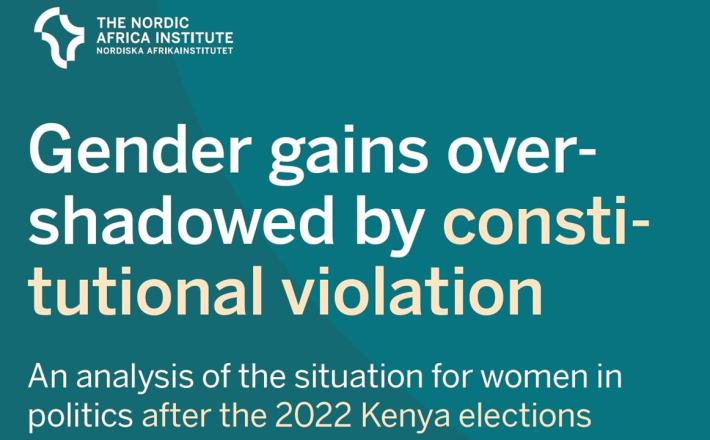Gender gains overshadowed by constitutional violation: An analysis of the situation for women in politics after the 2022 Kenya elections
Source: Reliefweb
From a gender perspective, three main lessons can be learnt from the general election. First, gender issues are on the rise, a fact shown not least by the appointment of the first-ever women running mate for one of the two main presidential candidates. Second, although the ratios of women representatives at all levels are slowly but steadily increasing, the gender quota is just window dressing, which the parties blatantly ignore or work around by nominating women candidates to top-up lists. Third, violence against women in politics poses a serious threat to women’s political inclusion and citizenship.
On 9 August, Kenyans headed to the polls to elect the country’s president. In addition to the executive, Kenyans also elected 290 members of parliament, 47 governors, 47 senators, 47 women representatives and 1,450 members of county assemblies in the elections. However, the executive race was the focus of attention. Both online and offline, the two presidential contenders William Ruto and Raila Odinga engaged in rhetoric to disparage the other, a tactic that succeeded because of – and was perpetuated by – the spread of misinformation.
Click here to access the report.

From a gender perspective, three main lessons can be learnt from the general election. First, gender issues are on the rise, a fact shown not least by the appointment of the first-ever women running mate for one of the two main presidential candidates. Second, although the ratios of women representatives at all levels are slowly but steadily increasing, the gender quota is just window dressing, which the parties blatantly ignore or work around by nominating women candidates to top-up lists. Third, violence against women in politics poses a serious threat to women’s political inclusion and citizenship.
On 9 August, Kenyans headed to the polls to elect the country’s president. In addition to the executive, Kenyans also elected 290 members of parliament, 47 governors, 47 senators, 47 women representatives and 1,450 members of county assemblies in the elections. However, the executive race was the focus of attention. Both online and offline, the two presidential contenders William Ruto and Raila Odinga engaged in rhetoric to disparage the other, a tactic that succeeded because of – and was perpetuated by – the spread of misinformation.
Click here to access the report.